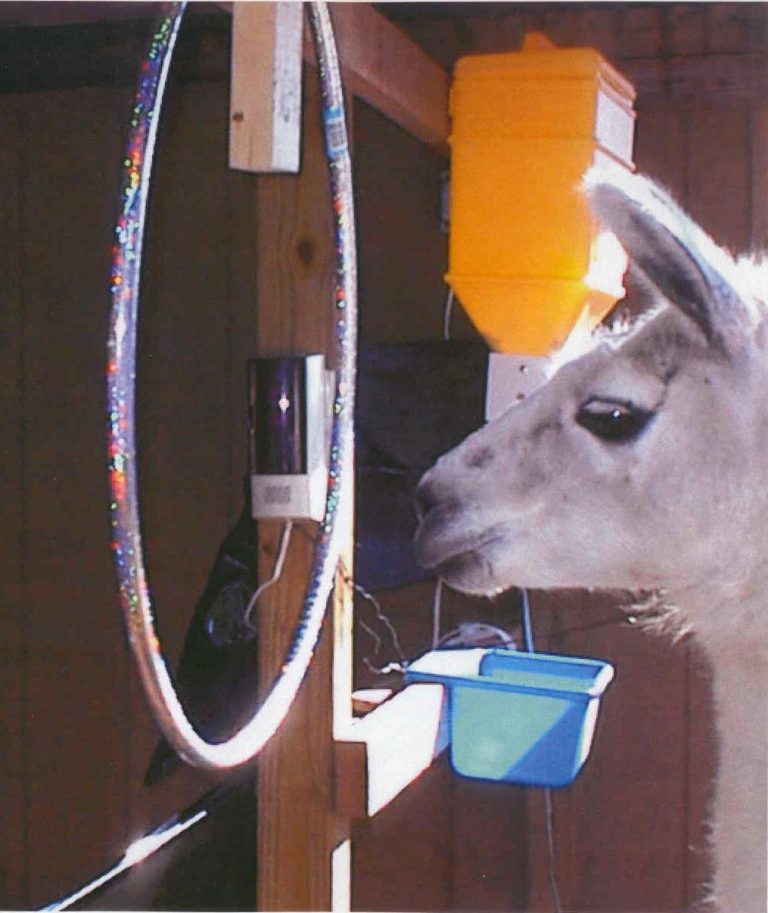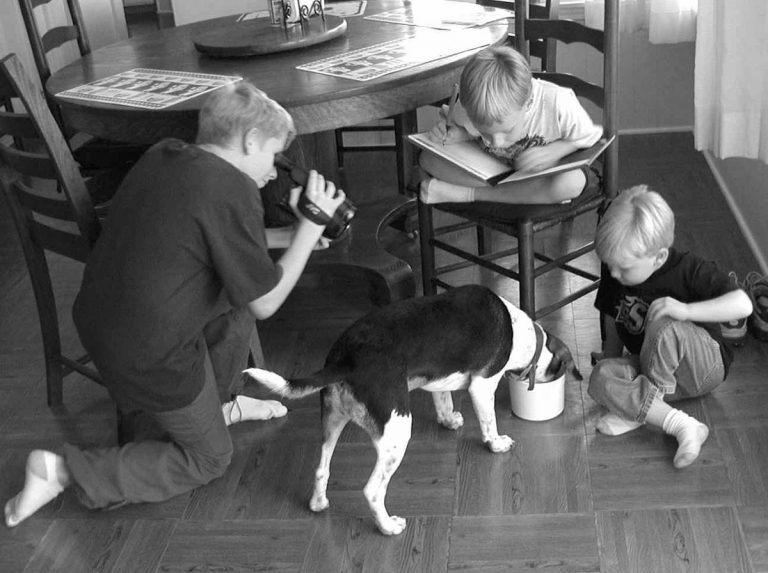OSU Center for Pet and Animal Food Palatability Studies
Introduction
The purpose of this Fact Sheet is to provide information about the Oklahoma State University (OSU) Center for Pet and Animal Food Palatability Studies. We will briefly describe some of our methods, list services provided by the Center, and close with a case study illustrating the use of pet owners in taste tests.
Pet and animal food products are emerging as important areas of economic development for Oklahoma. Low-value and underutilized raw materials can be converted into high value animal foods. Taste trials or “palatability studies” are a critical aspect in the development process of any new pet or animal food. The Center for Pet and Animal Food Palatability Studies provides clients with a complete range of services including experimental design, data analysis, and interpretation of results. A unique aspect of this center is that it can accommodate a wide range of animals including invertebrates and such popular vertebrate pets as cats, dogs, and fish. We can also accommodate farm animals such as llamas, horses, and cattle; and can test products developed for reptiles.
In addition to the ability of using a wide range of animals, we can design traditional laboratory based tests in which animals are trained under highly controlled conditions to perform various responses to determine the palatability of a feed or pet food. The Center contains such standard laboratory based apparatus as “operant conditioning chambers” (the so-called “Skinner box”) suitable for a wide variety of animals including rodents, fishes, birds, crustaceans, llamas, and horses. We also have a variety of shuttle boxes (i.e., choice chambers) and Pavlovian conditioning situations suitable for many invertebrate and vertebrate species. Facilities are also available for constructing apparatus for more exotic or non-standard animals. Figure 1 shows an operant chamber for a llama. Llamas are trained to poke their head through a hoop, and the response is detected by photocells. This apparatus has been used to show the animal’s preference to various types of grains, or to turn on fans or water misters.
Figure 1. An operant chamber for a llama.
To increase the ecological validity of our findings we can also provide the client with a field test. Our method of field testing is rather unique and is illustrated in the Case Study portion of this fact sheet.
Services available
The OSU Center for Pet and Animal Food Palatability Studies provides a number of services, listed below. A wide range of invertebrate and vertebrate animals can be accommodated, special projects will also be considered. In return for these services the entrepreneur provides an adequate quantity of the product to be tested and funds the project. Fees are calculated in advance and are assessed for student time, materials, travel (if appropriate), and maintenance of equipment.
- In-home and on-farm animal taste panel evaluation of pet treats, pet food and animal feed.
- Traditional laboratory based palatability studies.
- Field based palatability studies.
- Professionally prepared reports including video records of findings.
- Evaluation of human reactions to the pet products (i.e., ease of use, packaging).
- Shelf stability analysis, packaging recommendations, business planning and marketing assistance, process design, pilot-plant facility, equipment selection, and facility layout and design (these services are available from the Food and Ag Products Center, FAPC).
Case Study: The Citizen Scientist program
Over the past several years we have studied a wide range of pet food products ranging from fish bait to cat treats. When field tests are needed we implement a program the center has created called “The Citizen Scientist program.” The citizen scientist program trains pet owners to conduct palatability studies on their pets and livestock. The owners are trained in the skills required to conduct the taste trials and record results. In return for participation, the pet owner receives pet food and the knowledge obtained from participating in a scientific study. The latter should not be underestimated. Many of the characteristics of doing scientific research such as problem solving behavior, discipline, and library research are as useful to the citizens in the general population as they are to scientists. Moreover, the negative perceptions that children have of scientists can be reduced by participating in the activities that scientists engage in.
We had the opportunity to test a new “health treat” for dogs. We used house pets rather than kenneled animals because we wanted to directly test the product under “field conditions.” By working directly with pets in a natural environment the issue of generalizing from kennel to home is eliminated. An added benefit of using pets is that the center is able to test animals with “special characteristics” such as blindness, obesity and those on medication. The citizen scientist program also allows the center to test a wide range of breeds.
The typical citizen scientist palatability study involves several steps. First we recruit “citizen scientists” by creating a web listing. All participants are required to have a dog in good health. Each dog is seen by a veterinarian prior to the study. Participants are also required to have a video camera. Second, center staff meets with potential participants to explain the purpose of the study. Third, those that wanted to participate are trained to: 1) conduct the tests, and 2) record data on data sheets and on video. Figure 2 shows three, young “citizen scientists” (under adult supervision) conducting a palatability study with their pet beagle.
Figure 2. Three citizen scientists conduct a food palatability study (under adult supervision) with their pet beagle.
The volunteers met often with center staff to review the data and view the video tapes. During these meetings changes in experimental design are discussed. Following the experiment the volunteers are debriefed.
Conclusion
A new and valuable resource has been added to the tools that are available to the public from OSU. The Center for Pet and Animal Food Palatability Studies provides expertise and economical alternatives for pet food and animal feed taste trials for both companies and the general public. The center can accommodate a wide range of animals under both laboratory and field conditions. For additional information and to initiate your pet food or animal feed taste trial, please call the Food and Ag Products Center at 405-744-6071, or e-mail the authors Tim Bowser (bowser@okstate.edu) or Charles Abramson (charles@okstate.edu).
Tim Bowser
FAPC Food Processing Engineer
Charles Abramson
OSU Psychology Professor


